My lifelong love of books led me to a new creative pathway in 2002, when I completed a Penland School of Crafts summer class on letterpress printing. In that class I learned to handset metal type letter by letter, as well as create collographic and photopolymer printing plates. I then printed the type and the images using a Vandercook press—a favorite among book artists, I learned. One of my projects involved printing three of my original poems and three accompanying images for a pamphlet-stitched book (Natural Ways). By the time I finished that book, my relationship to writing and my appreciation of books as aesthetic objects had changed, and I knew that I wanted to explore the realm of artists’ books much more deeply.
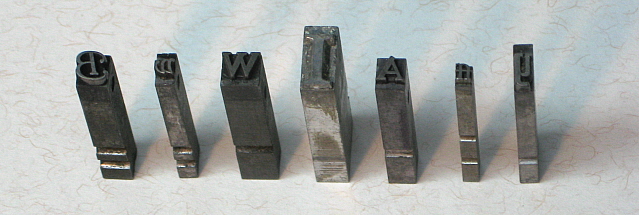
In the spring of 2003, I returned to Penland School of Crafts to complete an eight-week concentration focused on making both books and paper. I soon found that I especially enjoyed learning how to create a variety of book forms, many of which were based on centuries-old practices, and experimenting with ways to present text. I remain grateful to the generous teachers I had in those Penland classes—Steve Miller (University of Alabama’s M.F.A. in Book Arts program director) in the summer, and Julia Leonard (University of Iowa Center for the Book faculty member) and Ann Marie Kennedy (nationally known papermaker and paper artist) in the spring.
Since taking those Penland classes, I’ve attended Paper & Book Intensive and completed a number of other workshops, taught bookmaking workshops at the Paul & Florence Memorial Art School, served as an assistant instructor in a John C. Campbell Folk School book arts class, and completed an artist’s residency at Mammoth Cave National Park and a joint artists’ residency at Pictured Rocks National Lakeshore with visual artist/book artist Lucia Harrison. I’ve also been active in book arts organizations such as the Southeast Association for Book Arts, the Guild of Book Workers–Southeast Chapter, and the Slow Book Salon (an association of western North Carolina book artists), and I am an associate member of the American Craft Council. While living in Boone, NC, I received invaluable support from the Watauga Arts Council, which hosted my first solo exhibition and encouraged my artistic development.
Many of my artist’s books reflect my interests in editing, which I focused on for twenty years before delving into book arts. As a freelance editor, I’ve worked primarily on nonfiction trade books for publishers such as BasicBooks (HarperCollins), Newmarket, Addison-Wesley, and Kodansha America. I’ve also edited scholarly books and journals, college textbooks, foundation reports, conference proceedings, newsletters, and special reports. In addition, I’ve taught editing at Appalachian State University, at the Carolina Publishing Institute, and in private workshops. Editing has opened many avenues of language-related interests for me, so in artist’s books I often return to that facet of my background. (Details about my editing experience are available upon request.)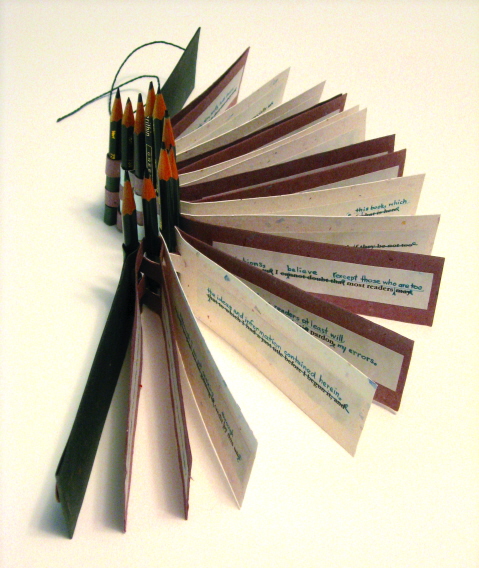
Since I also write poetry, I incorporate original poems in a variety of my books. My poems have appeared in numerous journals, a chapbook, and various anthologies, as well as on the North Carolina Arts Council’s website among poems featured by the state poet laureate. I’m a past president of the North Carolina Poetry Society and a past chair of the North Carolina Writers Conference. I’ve long been interested in links between the literary and the visual arts, and creating artist’s books has offered me an ideal avenue for exploring those links.
An article about my background and my approach to book arts appeared in the May 2007 issue of Western North Carolina Woman magazine. If you'd like to see that, you can place a request through the WNCW website. (FYI--One of the academic degrees referred to in the article was from Virginia Tech, rather than "Virginia.")


For almost thirty years, the beauty of Boone, North Carolina, fed my creative activities and grounded my book-arts explorations. With an elevation of almost 3,400 feet, Boone is part of an area known as the High Country, where the natural splendors rival those of the Great Smoky Mountains National Park. Here are a few glimpses of beauties in the place where I was fortunate enough to live and work during my journey into book arts.
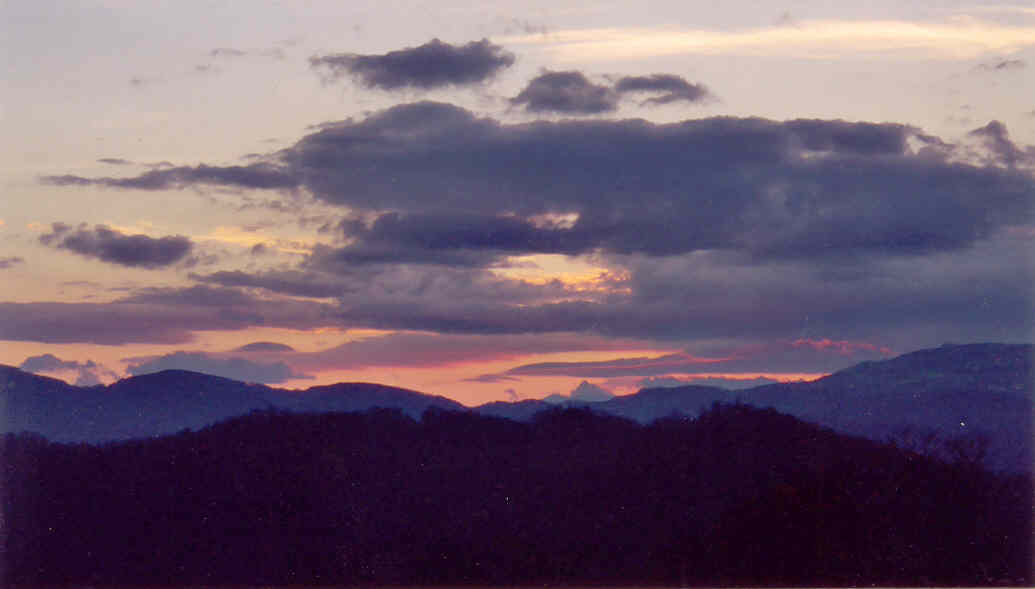
Mountain Twilight
Azure afternoon fades
into a light line rimming
the ridges. With the sun’s
parting blaze, gold
and coral swirls yield to
blue-gray hills meeting
blue-gray skies. In the moment
of merger, eyes strain for
one last assurance
of separateness and find
only unity’s affirmation.
After darkness obscures
vision, we seek location
markers and home in on stars.
With thanks to Moonwort Review, where this poem was first published.
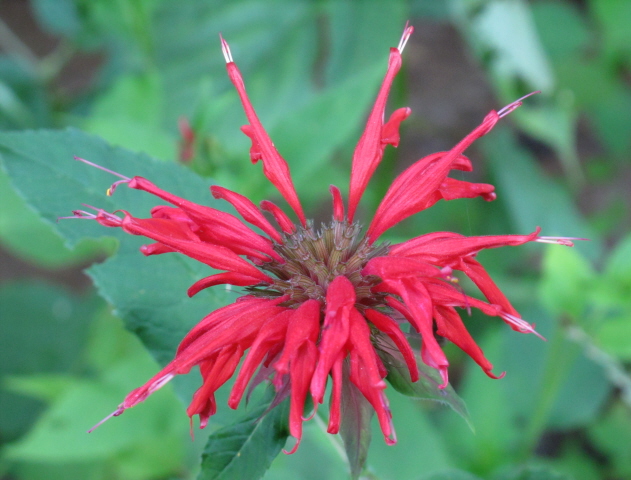
"Notes of a Botanical Excursion to the Mountains of North Carolina," 1841
The mountainsides, though steep
or precipitous, draw me away from
the day’s to-do list. Geared up, I
head toward slopes whose crevices
are covered with a rich and deep
vegetable mould, and whose boulders
are dappled with lichen. I enter
the understory, crouch near moss,
scan the well-marked route ahead.
Bootprints veer away, cut through
wintergreen, ground cedar, Oconee bells.
I strike a brisk pace, but steps feel
weighty on this trail snaking toward
ridgetop, where every eastward glance
is telling: these slopes are heavily
timbered. I listen for an echo of
early settlers' "Timber!" and, across
a clearing, glimpse logging trucks,
whose forerunners brimmed chiefly
with chestnut, white oak, the tulip-tree,
the cucumber-tree, and sometimes
the sugar maple. Miles farther,
past strains of chainsaws, I pause
beside rows of pines casting barred
shadows and struggle to recapture
Asa Gray's sentence, its original sense.
With thanks to Pembroke Magazine, where this poem was first published. The poem title and the italicized words are from an 1841 American Journal of Science article by Asa Gray, the preeminent American botanist of his day. Punctuation of Gray's original sentence was altered for use in this poem.
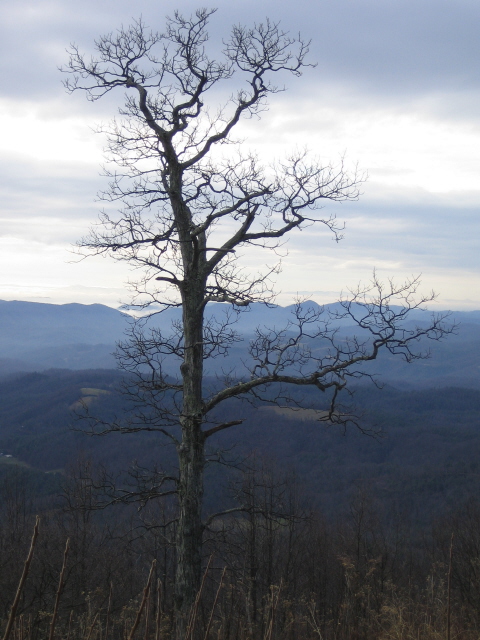
In 2016, I moved to Winston-Salem, NC, another place in this state that boasts a thriving arts community and that dubs itself--rightly so--"The City of Arts and Innovation."